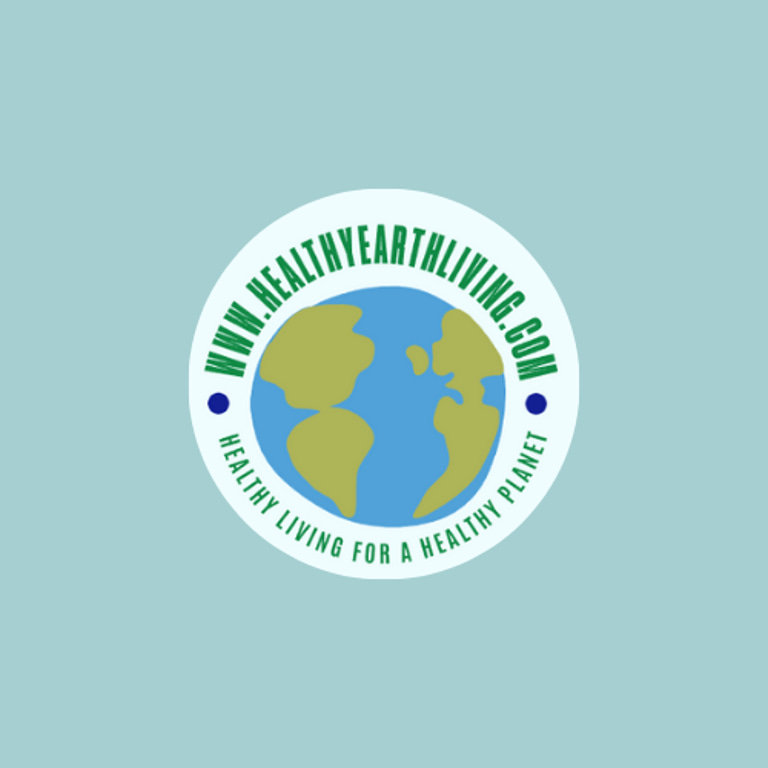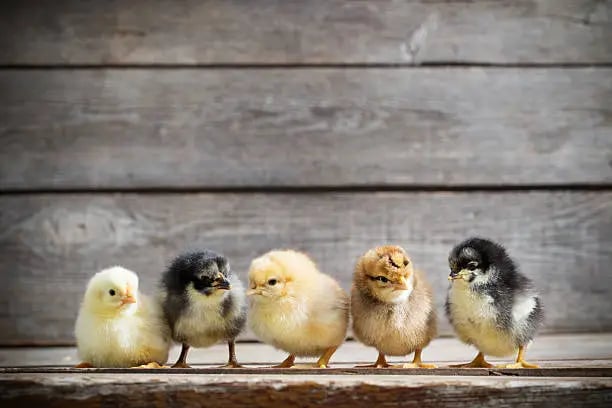17 Reasons to Stop Eating Meat
Janelle Salo RN
8/24/202412 min read
As a small child, I was brought up on a meat and dairy diet. I was conditioned into it like many of us are. My parents didn’t know any better because they, too, were also conditioned into thinking that humans must have meat and dairy in their diets to grow “big and strong.” I raised my son the same way; however, the biggest, strongest mammals roaming our planet are all vegans! From elephants to giraffes, buffalo to cows, and our closest living relatives, gorillas. They, like us, are designed to eat plants. How our mouths are created to chew and grind food, and how we digest our food. We were all born to be vegans!
So why were we taught that we must eat meat to survive?
In recent years, many health-conscious individuals have been exploring the impact of red meat and poultry on human health. Although these protein sources are staples in many diets, research shows that their regular consumption may have several adverse effects. In my own family, we are prone to diabetes, heart disease, cancer, dementia, and arthritis. Now, in my 50s, I’ve decided to back off eating meat and embrace a plant-based diet. Here is why you should, too!
Increased Risk of Chronic Diseases
One of the main reasons why red meat, mainly processed red meat, is unhealthy is its link to chronic diseases. Studies have shown that high consumption of red meat increases the risk of heart disease, stroke, and type 2 diabetes. (1) The saturated fats and cholesterol found in red meat contribute to plaque buildup in arteries, leading to cardiovascular problems.
Similarly, frequent consumption of poultry has also been associated with increased cholesterol levels (2), primarily when fried or prepared with unhealthy fats. While poultry may be leaner than red meat, its frequent consumption, mainly processed forms like deli meats and sausages, can still contribute to cardiovascular issues.
Potential Cancer Risks
Another concerning aspect of red meat consumption is its link to cancer. The World Health Organization (WHO) has classified processed red meat as a Group 1 carcinogen, (3) meaning it is known to cause cancer in humans, particularly colorectal cancer. Non-processed red meat is also considered a probable carcinogen (Group 2A), with studies linking it to various cancers, including breast and prostate cancer.
Poultry, while generally considered a healthier alternative, isn't entirely risk-free. Some research suggests a possible connection between high poultry consumption and certain cancers, such as non-Hodgkin lymphoma and liver cancer, (4) although more studies are needed to confirm these findings.
Harmful Additives and Antibiotics
The meat industry often uses harmful additives and antibiotics that can negatively affect human health. Red meat, particularly processed varieties like sausages, bacon, and ham, often contains nitrates and nitrites. (3) These preservatives are added to enhance flavor and shelf life but have been linked to an increased risk of cancer.
Additionally, the use of antibiotics in poultry farming is a growing concern. Poultry is frequently treated with antibiotics to prevent disease in overcrowded farming conditions. (5) Overusing antibiotics in animal agriculture can lead to antibiotic resistance in humans, making it harder to treat bacterial infections.
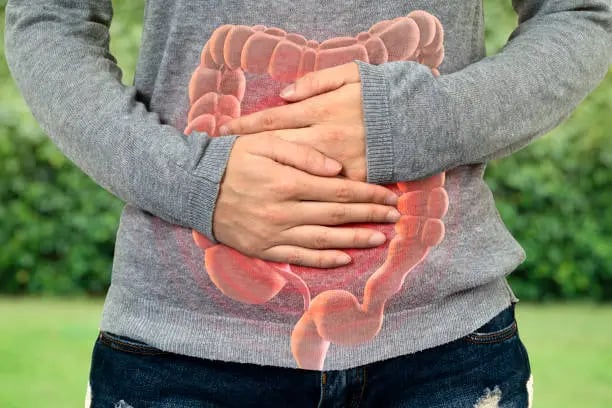

High Levels of Saturated Fat and Cholesterol
Both red meat and poultry contain significant amounts of saturated fats and cholesterol, which can contribute to various health problems. (6) Saturated fats are known to raise LDL (bad) cholesterol levels in the blood, leading to an increased risk of heart disease. While leaner cuts of poultry are often promoted as heart-healthy, many people consume poultry in ways that negate its benefits—like frying or adding unhealthy fats during cooking.
Red meat, especially fatty cuts like ribs or ground beef, can be exceptionally high in saturated fat. Regular consumption of these fatty cuts contributes to weight gain, obesity, and metabolic issues.
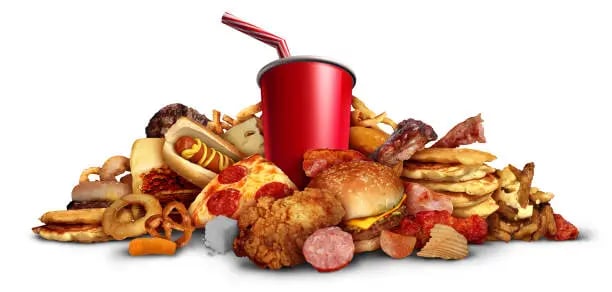

Digestive Problems
Consuming red meat and poultry can also lead to digestive issues. (7) Red meat is difficult for the body to digest due to its high fat content and complex protein structure. This can result in bloating, gas, and constipation. Over time, a diet high in red meat has been linked to an increased risk of diverticulitis, a painful condition that affects the colon.
Poultry can also cause digestive issues, particularly when undercooked. (8) Bacteria like salmonella and campylobacter, commonly found in poultry, can cause foodborne illnesses that result in nausea, vomiting, diarrhea, and stomach cramps. Proper handling and cooking of poultry are essential to minimize these risks.
Animal Farming is Bad for the Planet!
As climate change accelerates and our planet's health deteriorates, our food choices are more important than ever. While many people know the personal health risks associated with eating red meat and poultry, fewer understand the environmental toll these foods take on our planet.


Greenhouse Gas Emissions from Livestock Production
One of the most significant environmental impacts of eating red meat and poultry is the high greenhouse gas emissions associated with livestock production. Raising animals for food, particularly cattle, contributes significantly to methane emissions, which are far more potent than carbon dioxide in trapping atmospheric heat. The livestock sector is responsible for nearly 15% of all global greenhouse gas emissions (9), with beef and dairy production being the most significant contributors.
Poultry farming also contributes to greenhouse gas emissions, although to a lesser extent than beef. However, the sheer scale of poultry farming, combined with the emissions from feed production and waste management, still significantly contributes to climate change. (10) Reducing the consumption of red meat and poultry can positively impact reducing our carbon footprint.
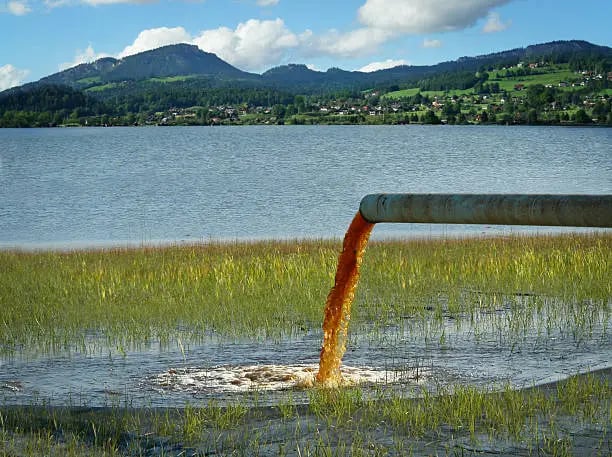

Water Consumption and Pollution
Livestock production is one of the most water-intensive industries in the world. It takes thousands of gallons of water to produce just one pound of beef. (13) The water footprint of poultry is also substantial, though lower than beef's. (14) This high water usage depletes local water supplies, particularly in regions facing water scarcity due to climate change.
In addition to water consumption, livestock farming also contributes to water pollution. Animal waste, pesticides, and fertilizers used in feed crop production can run into rivers and lakes, contaminating water sources and harming aquatic life. (15) Factory farms, where large numbers of animals are raised in confined spaces, are notorious for creating massive amounts of waste that pollute nearby water bodies.
Reducing your consumption of red meat and poultry can help conserve precious water resources and reduce water pollution.
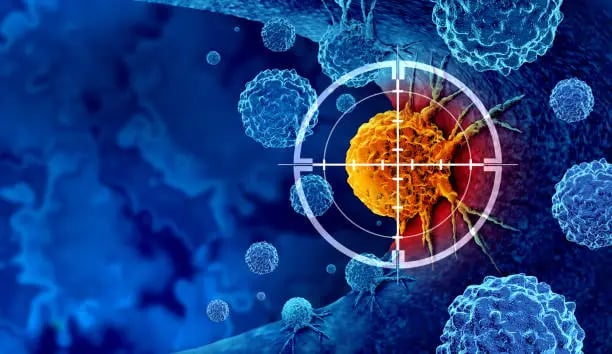

Soil Degradation
The environmental damage caused by eating red meat and poultry extends beyond the air and water; it also affects the soil. Producing feed crops like corn and soy for livestock requires intensive farming practices that degrade soil health. (16) Over time, this leads to soil erosion, loss of nutrients, and reduced agricultural productivity.
Grazing livestock, particularly cattle, can also contribute to soil degradation. Overgrazing leads to the compaction of soil, which reduces its ability to absorb water and grow vegetation. (17) This, in turn, increases the likelihood of desertification in vulnerable regions. Reducing the demand for red meat and poultry can help protect and preserve the health of our soils, ensuring that they remain productive for future generations.
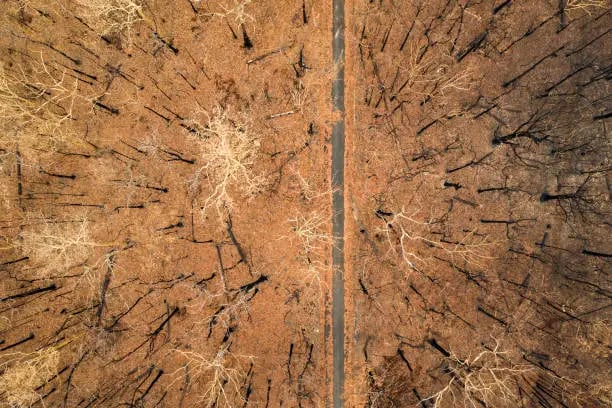

The Environmental Impact of Animal Feed
One often-overlooked aspect of red meat and poultry production is the environmental impact of animal feed. Growing feed crops like soybeans and corn require large amounts of land, water, and chemical inputs. The pesticides and fertilizers used to produce these crops can leach into the soil and water, causing pollution and contributing to the depletion of natural resources. (18)
The demand for animal feed also drives deforestation and habitat destruction in regions like the Amazon rainforest, where forests are cleared to grow soybeans for livestock feed. (11) By reducing your consumption of red meat and poultry, you can reduce the demand for these resource-intensive feed crops, helping protect vital ecosystems and reduce pollution.
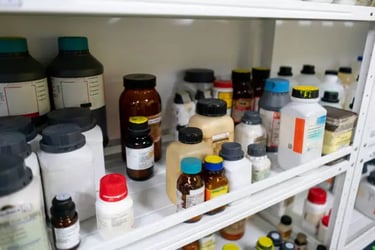

Deforestation and Land Use
The production of red meat, particularly beef, is a leading cause of deforestation, especially in tropical regions like the Amazon rainforest. (11) Forests are cleared to make way for grazing land and to grow feed crops like soybeans, which are then fed to livestock. This deforestation destroys vital ecosystems and contributes to the loss of biodiversity and the release of stored carbon dioxide into the atmosphere, further exacerbating global warming.
Poultry farming also requires vast amounts of land to grow feed crops like corn and soy, which often leads to deforestation and habitat destruction. (12) As demand for meat increases, more forests are cleared to produce the feed needed for industrial-scale farming. Shifting away from red meat and poultry can help reduce the pressure on these critical ecosystems and preserve the planet’s biodiversity.
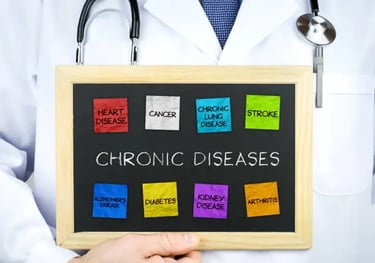

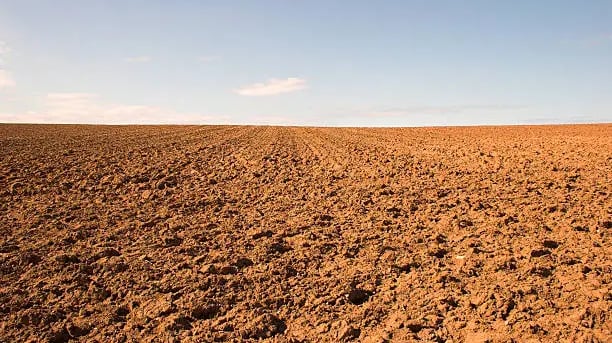

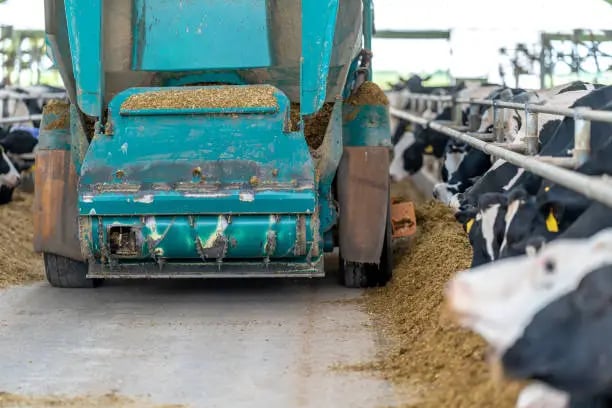

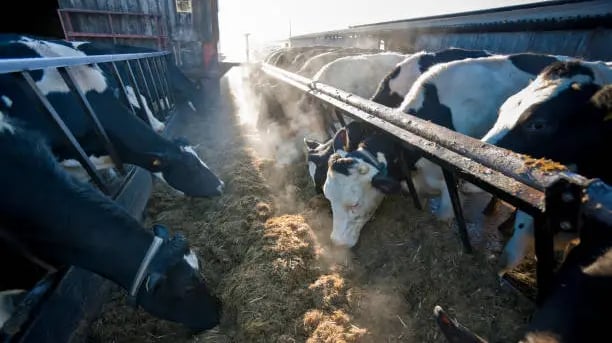

Animal Agriculture and Biodiversity Loss
The expansion of livestock farming has devastating effects on global biodiversity. As forests and grasslands are cleared to make way for cattle grazing and feed crop production, countless species lose their natural habitats. (19) This has led to significant declines in wildlife populations and increased species extinction risk. Large-scale poultry farming also contributes to biodiversity loss by destroying ecosystems and polluting the environment with waste and chemicals. (20)
By choosing plant-based foods instead of red meat and poultry, you can help reduce the demand for animal agriculture and protect the world’s precious biodiversity.
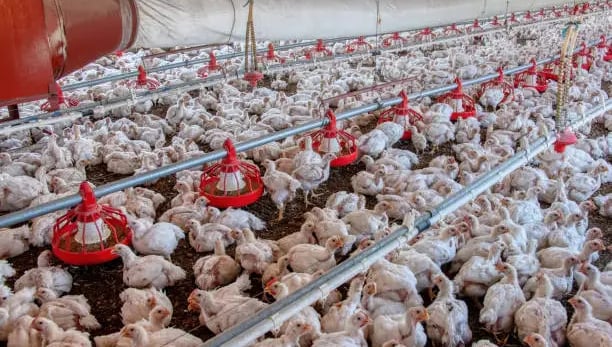

The Hidden Cruelty Behind Your Meat
Now, for the hard part. Industrial animal farming, or factory farming, has become the primary method for producing meat, dairy, and eggs in many parts of the world. While this system allows for the mass production of animal products at lower costs, it comes with a significant ethical cost. This is the primary reason why I chose to stop eating meat. The inhumane conditions in which animals are raised on factory farms have sparked growing concern among animal rights advocates, environmentalists, and health-conscious consumers alike.
Confinement and Overcrowding: Cruel Living Conditions
One of the primary reasons industrial animal farming is considered inhumane is the confinement and overcrowding of animals. On factory farms, chickens, pigs, and cows are often crammed into tiny cages or crowded pens with little to no room to move. (21) These conditions prevent animals from engaging in natural behaviors, leading to severe physical and psychological distress.
For example, egg-laying hens are typically kept in battery cages with so little space that they cannot spread their wings. Pigs are often confined to gestation crates that are so small they cannot even turn around. Cows raised for dairy are frequently kept in cramped feedlots, where they cannot graze freely. These inhumane conditions lead to injuries, deformities, and a lifetime of suffering for the animals.


Painful Practices: Routine Mutilations Without Anesthesia
Another disturbing aspect of industrial animal farming is the routine mutilation of animals without the use of anesthesia. (22) To prevent injury from the stress of overcrowding and confinement, factory farms often subject animals to painful procedures such as debeaking, tail docking, and castration.
Chickens, for example, have the tips of their beaks cut off to prevent them from pecking each other in overcrowded conditions. Pigs have their tails docked in order to avoid biting, which is a common behavior in stressful environments. Male animals are often castrated without pain relief to control reproduction and improve meat quality. These practices are performed with little regard for the animal's well-being and cause immense suffering.
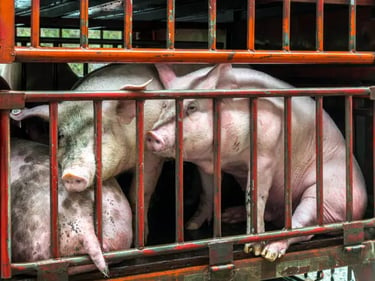
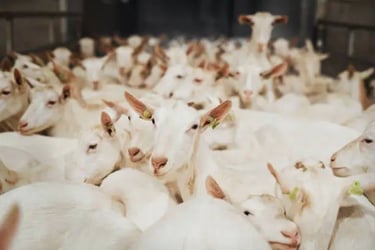
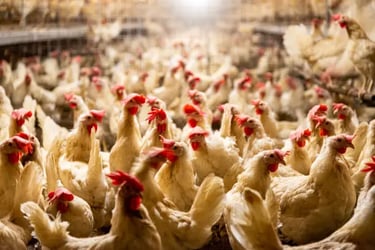



Lack of Veterinary Care and Disease Spread
Factory farms often prioritize profit over animal welfare, leading to inadequate veterinary care and poor living conditions that increase the spread of disease. (23) Animals on factory farms are kept in unsanitary conditions, standing in their own waste, which makes them susceptible to infections and illnesses. Instead of providing individual care, farms often rely on antibiotics to prevent disease outbreaks, which further compromises the health of the animals.
The overuse of antibiotics on factory farms harms animals and contributes to the rise of antibiotic-resistant bacteria, posing a serious threat to human health (24). The close quarters and poor factory farm conditions also exacerbate the spread of bird flu, swine flu, and other zoonotic diseases, endangering animals and humans.
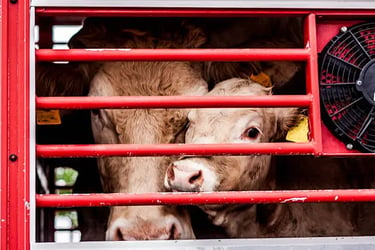
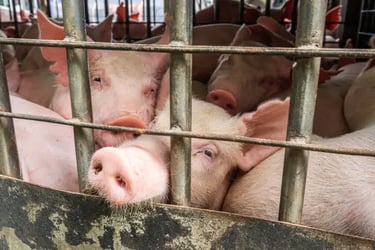
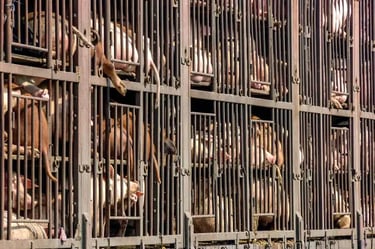



Shortened Lifespans and Premature Slaughter
The animals raised on factory farms are often bred to grow unnaturally fast or produce high yields, which takes a toll on their bodies. (25) Broiler chickens, for example, are bred to grow so quickly that their legs often cannot support their own weight, leading to painful deformities. Dairy cows are pushed to produce far more milk than their bodies are naturally designed to, leading to exhaustion, mastitis (a painful udder infection), and other health problems.
Once these animals have served their purpose, they are sent to slaughter long before their natural lifespans would end. The conditions in industrial slaughterhouses are often brutal, with animals being slaughtered while fully conscious or improperly stunned, resulting in extreme suffering. The entire process—from birth to death—is designed for maximum efficiency and profit, with little regard for the animal's well-being.
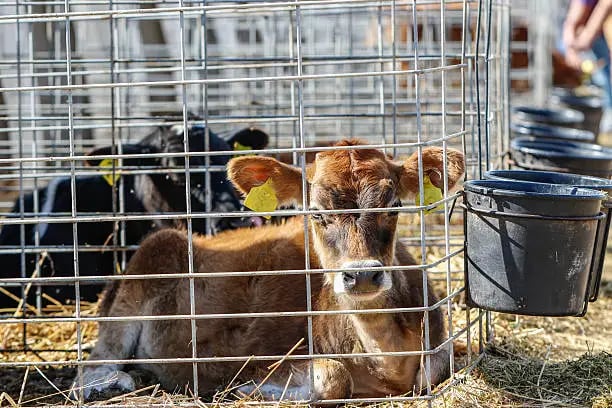

Emotional and Social Deprivation
Animals on factory farms are deprived of physical comfort and emotional and social stimulation. (26) Many animals, like pigs, cows, and chickens, are brilliant and social creatures that naturally form bonds with their peers. However, in the industrial farming system, they are denied the opportunity to interact with others in meaningful ways.
For example, pigs are known for their intelligence and curiosity, but they are confined to barren pens with no enrichment or stimulation on factory farms. Dairy cows are often separated from their calves shortly after birth, causing distress for both mother and calf. Chickens, which naturally form complex social hierarchies, are kept in conditions that prevent them from engaging in any of their normal behaviors. This emotional and social deprivation adds another layer of cruelty to the industrial farming system.
I’m an American, and I could never imagine eating a beloved dog or a cat; they are our pets and family members, but in some East Asian countries, dog and cat farming is still commonly practiced. (27) What makes them any different from a pig, cow, chicken, lamb, or rabbit? Who gave us the right to decide that they should die so that we could enjoy a 10-minute meal for a hamburger or a chicken sandwich?
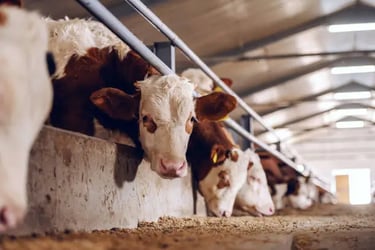
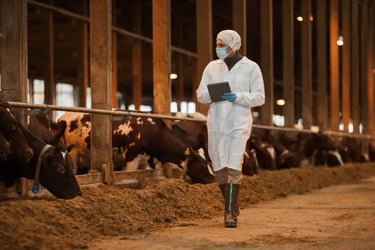


The Ethical Dilemma: Treating Living Beings as Commodities
At the heart of industrial animal farming's inhumanity is the ethical dilemma of treating living beings as mere commodities. Factory farms view animals as units of production, not as sentient beings with the capacity to feel pain, fear, and pleasure (27). This commodification normalizes cruelty and justifies practices that would be considered unacceptable in any other context.
As consumers become more aware of the suffering that goes on behind the closed doors of factory farms, many are choosing to reduce or eliminate their consumption of animal products altogether. Plant-based diets and alternative protein sources are gaining popularity as people seek to align their food choices with their values of compassion and sustainability. Simply put, if you love animals, don’t eat them!
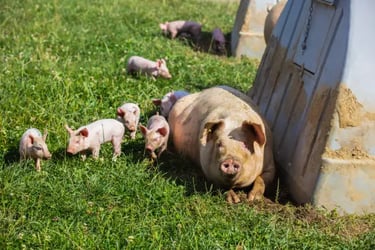
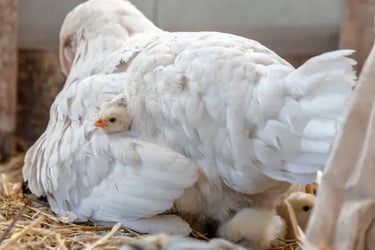
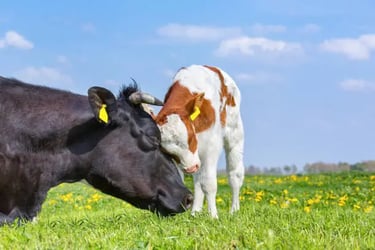



Bottom Line
While red meat and poultry are often praised for their protein content, their regular consumption can have profound health implications. From increased risks of chronic diseases and cancer to digestive problems and the impact of harmful additives, the evidence against these meats is strong. Reducing or eliminating red meat and poultry from your diet and instead opting for plant-based proteins like beans, lentils, and tofu can lead to better health outcomes and a healthier planet.
The environmental impact of eating red meat and poultry is far-reaching and contributes significantly to climate change, deforestation, water scarcity, pollution, soil degradation, and biodiversity loss. By reducing your consumption of these animal products and embracing a more plant-based diet, you can help protect the planet and ensure a healthier future for all.
Making mindful choices about what we eat is one of the most powerful actions we can take to combat environmental destruction. Every meal is an opportunity to reduce your carbon footprint, conserve natural resources, and protect the Earth’s fragile ecosystems. Start by taking baby steps. Maybe Meatless Mondays or eat plant-based alternatives like the Impossible Line, Silk nut milk, Rebel Cheese, and JUSTEgg. Trust me; you cannot get closer to plant-based meat, dairy, and egg alternatives than them! I’ve tried them all, and I endorse them 100%
But most importantly, Industrial animal farming is inherently inhumane due to the confinement, mutilation, neglect, and emotional deprivation experienced by animals on factory farms. The practices used in factory farming prioritize efficiency and profit over the well-being of animals, leading to immense suffering for billions of animals every year.
As awareness of these inhumane practices grows, consumers must consider the ethical implications of their food choices. Reducing or eliminating meat, dairy, and eggs from one's diet can help decrease demand for factory-farmed products and promote a more humane and sustainable food system that is not only good for you and the planet it’s the right thing to do for the animals we love and share this planet with.
© 2025 Salo Content Writing LLC, all rights reserved
Join the Movement for a Healthier Planet! 🌿
Subscribe now and get your FREE Sustainable Living Checklist! Plus, enjoy weekly articles and delicious plant-based recipes straight to your inbox. Let’s make sustainable living simple and inspiring, one email at a time! 💚✨
